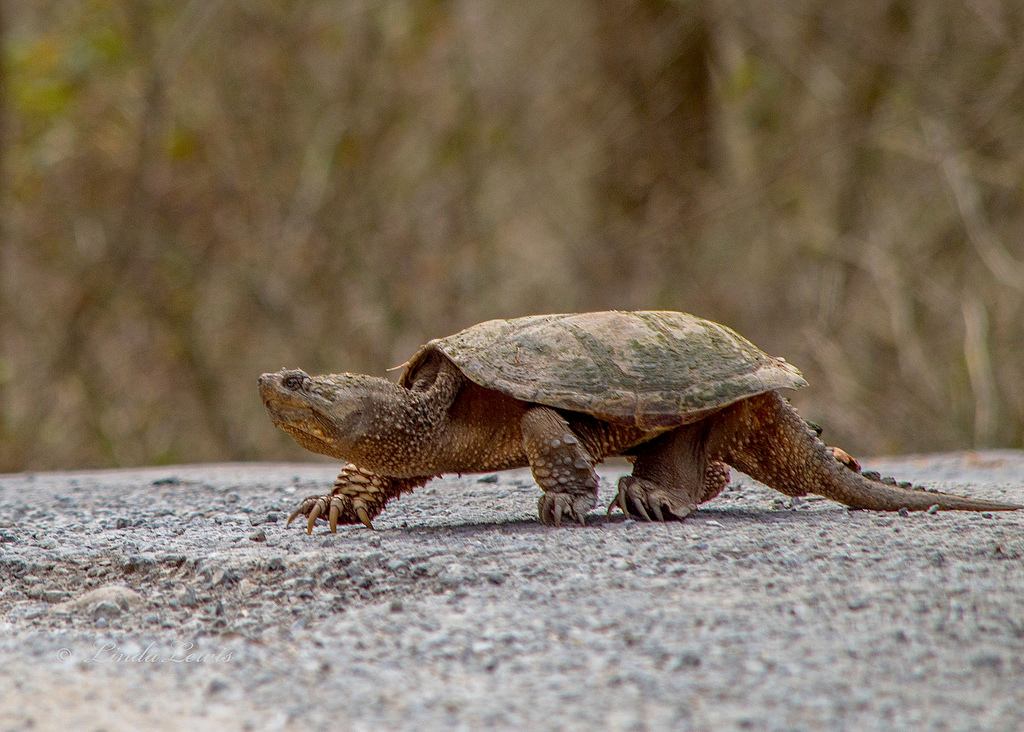
By Jill Mulford
Snapping Turtles in Queen’s Landing? (Sounds a bit like those Geico commercials doesn’t it?) Well, we do have snapping turtles here. One day, our neighbor found a huge turtle on his porch. He called us over to look and, not thrilled by the size of the intruder, we blocked its way to our porch with a trash can then backed off. Our neighbor tried to gently prod it off his porch with a golf club but the turtle was not happy at being bothered! It hissed and snapped at the golf club so with that, we all decided to retreat to our own houses. Later the turtle was gone with no harm done. This led me to wonder more about our snapping turtle neighbors.
Eastern snapping turtles are common in Maryland and live in both fresh and brackish water. They evolved from ancient reptiles and predate the dinosaurs. They have a long tail with three rows of spikey projections. Their shell ranges in size from 11 to 22 inches long and weigh between 22 and 75 pounds. They can be recognized by their long neck which enables their snapping jaws to reach the length of their bodies. With a lifespan of 30 to 40 years, the same turtles will live in Queen’s Landing for longer than most of us.
Wildlife experts recognized the importance of the snapper’s role in our ecosystem as aquatic predators and scavengers in the last part of the 20th century. Their diet consists of fish, frogs, reptiles, birds, and small mammals, both living and dead. On occasion, they will eat ducklings or goslings but their detrimental effect on those populations is unfounded and exaggerated. As adults, these large creatures are threatened by hunting and habitat loss; man is their predator. Properly licensed through the DNR, people trap them for their meat though man may NEVER destroy a turtle nest. Trappers must follow all regulations plus record and report their catch to the state.
For the most part, snapping turtles remain in the water, buried in the mud, hibernating. Female turtles venture out of the water in nesting season, which is late April to mid-June. They can travel far distances from the water to find a place to dig their
nest in sandy or gravelly soil, making their journey at night or early morning. 20 to 40 ping pong ball sized eggs are laid 4 to 7 inches deep. 85% of eggs do not survive because they are run over by cars or eaten by blue herons, hawks, crows, bullfrogs, or foxes. Sadly, mother turtles are often killed by cars after digging a nest.
Snapping turtles will not chase people or plan an attack. They are timid creatures though if a person corners them, they will respond aggressively. USE CAUTION – their necks allow a broad reach and their bite can sever a finger. DO NOT approach a turtle or even think about keeping it as a pet. As with any wildlife, viewing from a distance is the safest alternative. If a turtle is on your porch, it may be trying to find a nesting spot. You will be well served to leave it alone, having been lucky enough to see it at all. More info can be found at Wikipedia, other sources, or on the Maryland DNR website.


